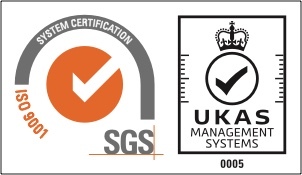1.jpg)
As many organisations move towards a more hybrid workplace, the wellbeing of employees becomes increasingly important. An employee may enjoy the flexibility of working from home, while at other times, they may feel the need for social interaction and collaboration in an office setting.
According to a recent Global Forbes Survey, 57% of respondents said they feel disconnected from their organisation and co-workers in a hybrid workplace, and 62% said that limited networking opportunities with senior employees and co-workers has negatively impacted their career growth. Today, it is crucial for businesses to adapt and build processes that serve their employees’ present needs, and we've detailed a series of tips below to help you prioritise the wellbeing of your workforce and create a more positive hybrid working environment.
Encourage Social Interaction and Collaboration
One of the benefits of a hybrid workplace is that you do have the ability to provide employees with the opportunity for social interaction and collaboration. To encourage this, organisations should consider creating dedicated spaces for socialising and cooperation, such as breakout areas or meeting rooms. They should also encourage employees to take time out of their day to interact with colleagues, whether it’s through scheduled coffee breaks or lunchtime walks. You can also run virtual social events or video-based networking sessions, ensuring all employees feel included and valued, regardless of where they work.
Spot Warning Signs
Working from home has become the new normal for many of us, but it can be easy for employees to fall into the trap of working long hours, neglecting their physical and mental health. Here are some warning signs that your employees may be suffering from home-working burnout, generalised anxiety or depression:
- Working longer hours than usual
- Struggling to disconnect from work
- Experiencing ‘brain fog’ and finding it difficult to concentrate
- Appearing more withdrawn on the telephone or video calls
- Sharing feelings of guilt, worthlessness and helplessness
- Late arrivals, missed meetings or absent days
Be There to Support Your Employees and Really Listen
The most important thing you can do as a leader is to support your employees. They need to know that you believe in them and their ability to do the job. When they make a mistake, take the time to listen to their side of the story. You may be surprised to learn that there was a valid reason for their actions. By showing that you are willing to listen and understand, you will gain the trust and respect of your employees. This is essential for maintaining a productive and positive work environment. When employees feel supported, they will be more motivated to do their best work.
Encourage a Work-life Harmony
Rather than focusing on achieving a work-life balance, which can be challenging to maintain, it is essential to concentrate on helping your employees nurture a work-life harmony. Create opportunities for employees to integrate their work and personal lives, ensuring they feel more productive, engaged, and satisfied with their work.
Working parents may appreciate dropping their kids off at school before starting their workday. What parents value in a job changes significantly after having children, making flexibility a high priority, and being more focused on progressing in their careers. According to a YouGov poll commissioned by Acas, 55% of British employers expect more staff to work remotely or from home at least part of the week. Organisations should also provide employees with the resources they need to manage their work-life harmony, such as access to childcare, flexible working hours and mental health support. By taking action, organisations can create a more positive, understanding and productive hybrid workplace.
Find the Right Balance Between Remote and Onsite Working
It's important to consider the daily percentage of your workforce that you can support working remotely without impacting client engagement, mental health or team culture. Too much time apart, people can feel isolated and unproductive – like they are not part of the team. More time spent in-person with colleagues, and you risk losing the benefits of working remotely. The key is to find the right balance for your company and employees. Some organisations have found that a split of 60/40 in favour of remote working is the sweet spot – enabling employees to get the best of both worlds without putting too much strain on either. However, the ideal split will vary from one company to another and will depend on factors such as the type of work completed, company culture and employees' individual preferences.
At GBS Corporate Training, we help leaders, managers and employees develop tools and techniques to recognise and address any underlying issues to create a more positive work environment. For many, it is hard to admit that they need help, but by proactively supporting and engaging with your employees, you'll find it easier to open up, encouraging others to do the same.
If you’d like to learn more about ourPersonal Wellbeing and Resilience training or wish to speak to us about how we can help you develop the right solution, please contact our training experts today on 01252 618 400. Alternatively, pleasesend us a message or start a chat by opening the popup window at the bottom of this page.
Sources:






